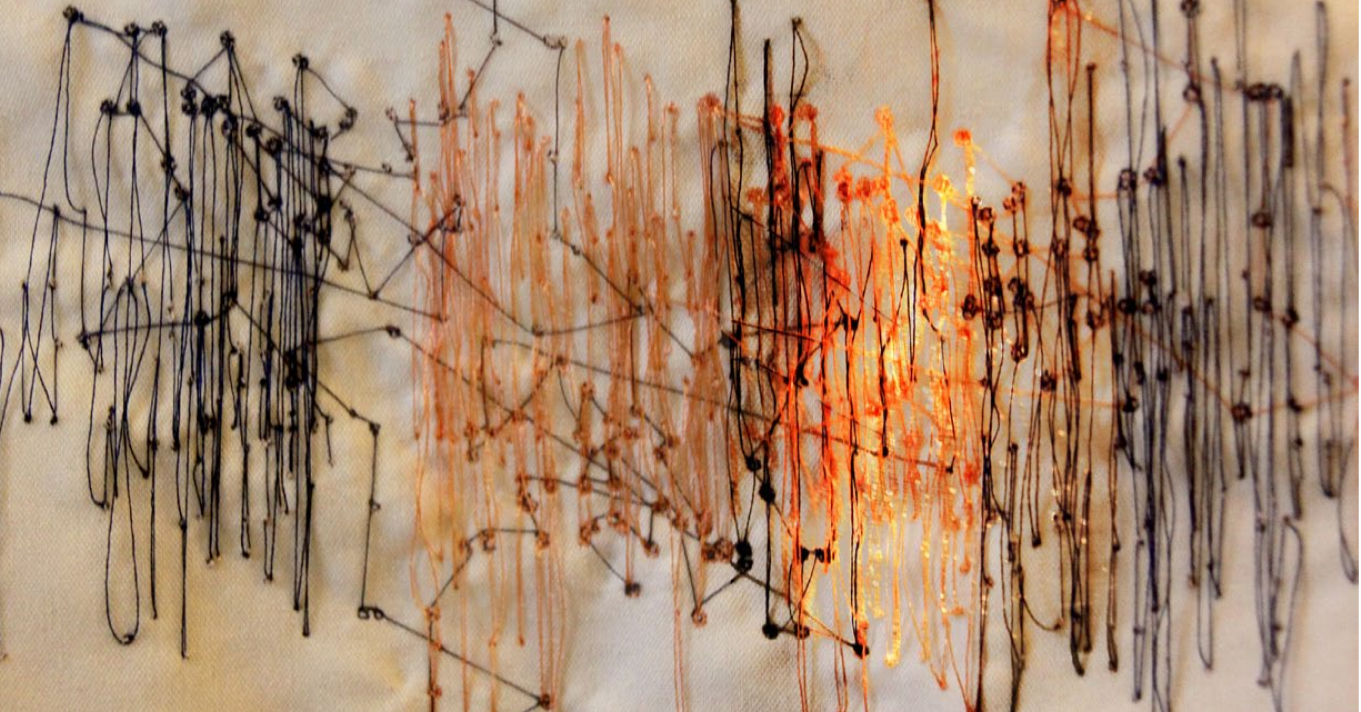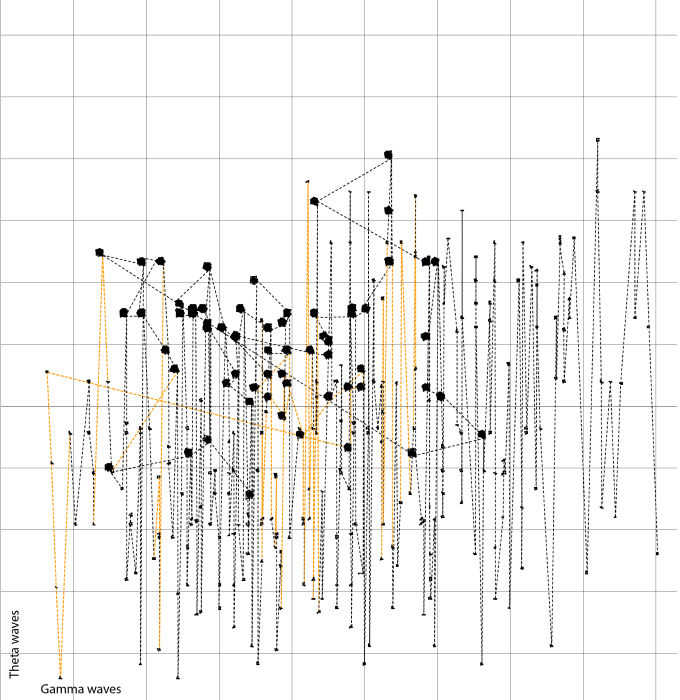

Sensing Bodies
Research
Harvard GSD (Delara Rahim)
Historically, there is a significant relationship between textile methodologies and expressions of identity. One of many examples are the use of embroidery in female inmates of psychiatric institutions in the 19th century. “In the late 19th and early 20th century, particularly for female inmates of psychiatric institutions, drawings, writing ,and especially sewing and stitching comprised the ways to communicate. These techniques allowed them to express their individuality in an anonymous environment in which they were usually not encouraged to comment upon their circumstances. Needlework was a convention, but was still somehow a subversive way to reconstitute their identity, which had been undermined by committal, the complete loss of their civil rights, and daily life at the asylum.”5 Embroidery was used as a therapeutic act of graphing memories and identities.
The algorithms of neurofeedback using the EEG data (EEG biofeedback) are designed to measure the brain and provide a feedback for the viewer to train the brain and the body. A vast amount of research has been done on the therapeutic aspects and potentials of this instrument and the feedback for the body. How can this same process be used to create poetic patterns and monumentalize the brain, to reveal psychologies and identities in public space? According to a neurofeedback practice called Brainworks, gamma and theta brainwaves are the “two types of oscillations [that] are particularly important for memory”6.
Here is a data visualization and a poetic translation of the process of making memories; creating a language which graphs the time, metaphorically freezes memories on the surface with the data of the brain, and metaphorically maps the network of this language on the network of the body and the nervous system.

